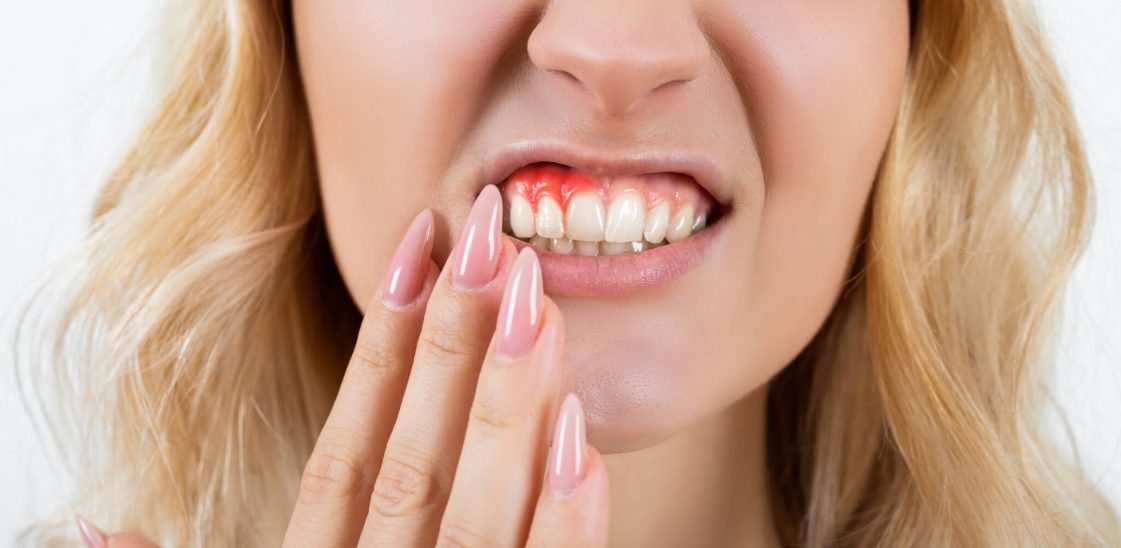
How to treat gum disease
Caused by untreated plaque that builds up on and around your teeth and gums, gum disease – which can take the form of mild gingivitis or the more serious periodontitis – can be an irritating and painful condition. If the bacteria that makes up plaque is not regularly removed through brushing and flossing, buildup can lead to swollen and bleeding gums.
Treating gum disease early is crucial. If left untreated, small ‘pockets’ of bacteria can start to form around teeth and on gums. These pockets can cause severe gum infection, known as periodontitis, which can damage the soft tissue that make up your gums and can lead to more serious gum bleeding and even tooth loss.
For this reason, taking gum disease seriously and knowing how to treat and prevent it through good oral hygiene techniques and simple lifestyle changes is essential. Read on for DenTek’s top tips when it comes to dealing with gum disease.[1]
How to cure gum disease
While it’s important to note that once gum disease has progressed beyond gingivitis, curing periodontitis may require prescription medication and/or surgery, the good news is that the vast majority of gum disease can be treated relatively simply. Providing no serious damage has been done to the soft tissues of your gums, a basic three-step treatment that involves sticking to a simple oral health routine is all that is needed. Below we outline these three steps and explain how they help to treat gum disease.[1]
Brush twice a day
While this should be a given, simply remembering to brush your teeth twice a day using fluoride toothpaste can make a huge difference when it comes to treating and preventing gum disease. Plaque and food particles that have become lodged in between your teeth are the number one cause of gum disease. Luckily, both can be removed easily by brushing for two minutes using a manual or electric toothbrush with soft, rounded bristles.[1]
For optimal results, ensure you are only using a pea-sized amount of toothpaste on your brush, and angle the brush at 45 degrees against the surfaces of your teeth as you start to clean. It’s also important to avoid brushing too hard, as this could damage the enamel on your teeth and cause your gums to recede. Remember – if the bristles of your toothbrush appear squashed as your brush, you are applying too much pressure.[2]
Floss
As well as brushing, including regular flossing in your daily oral hygiene routine is an essential part of preventing and treating gum disease. Flossing, using good quality products such as DenTek’s Plaque Control Cross Flosser, helps to remove any plaque and food particles that are lodged in those hard to reach areas of your mouth that brushing may have missed. As with brushing, it is important to floss twice a day, using slow, gentle motions to avoid harming your gums.[2]
Visit the hygienist
Ideally you should visit your dentist or dental hygienist every six months or at the intervals they recommend. They will be able to remove any plaque and tartar that has built up both above and below the gumline of all your teeth before it develops into gum disease. If they spot any early signs of gingivitis, they will provide you with additional brushing and flossing advice and may recommend more regular visits for professional cleans.[3]
Visit your doctor for antibiotics
Typically, antibiotics will only be prescribed for gum disease if the condition has progressed beyond gingivitis and has become periodontitis. In other words, if your gums have actually become infected. If this is the case, a GP or dentist will prescribe an antibiotic to clear up the infection. Once the infection has gone, your dentist will be able to advise you on how best to treat your gum disease. If soft tissue has already been irreversibly damaged, this may include surgery. If not, they may simply remind you to follow the above three steps.[1]
How to prevent gum disease
As we have discussed above, the best defence against gum disease mirrors those steps used to treat it – daily brushing and flossing, as well as regular visits to your dentist and dental hygienist. However, there are also a number of other things to consider in order to best protect your teeth and gums and prevent gum disease. These include:
- Not smoking
Smoking is strongly linked to the onset of gum disease. This is because smoking tobacco regularly can weaken your immune system, meaning it is harder for your body to fight off gum infection should it strike. It can also add to the amount of harmful bacteria your mouth is exposed to each day, increasing the amount of plaque that forms.
- Getting more Vitamin C
Aside from poor oral hygiene, Vitamin C deficiency is one of the most common causes of gum disease. This vitamin has healing properties which can help boost your body’s resistance to gum disease, as well as preventing bleeding and swelling. Try adding more oranges, strawberries and kiwis to your diet, or simply take daily Vitamin C supplements.
- Staying hydrated
Saliva is your body’s first natural defence against plaque, and therefore gum disease. This is because, after you eat something your body produces more saliva to help wash away any large food particles and plaque-causing bacteria. However, when you are dehydrated, your body cannot produce enough saliva to work effectively. This can lead to increased plaque build ups and gum disease. With this in mind, as a rule, you should aim to drink at least 3.7 litres of fluid each day to stay hydrated.[1]
Resources:
[1] https://www.nhs.uk/conditions/gum-disease/
[2] https://www.nhs.uk/live-well/healthy-teeth-and-gums/how-to-keep-your-teeth-clean/
[3] https://www.nhs.uk/live-well/healthy-teeth-and-gums/dental-check-ups/




